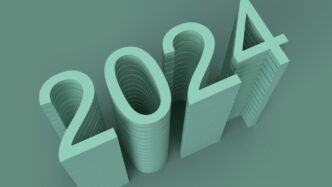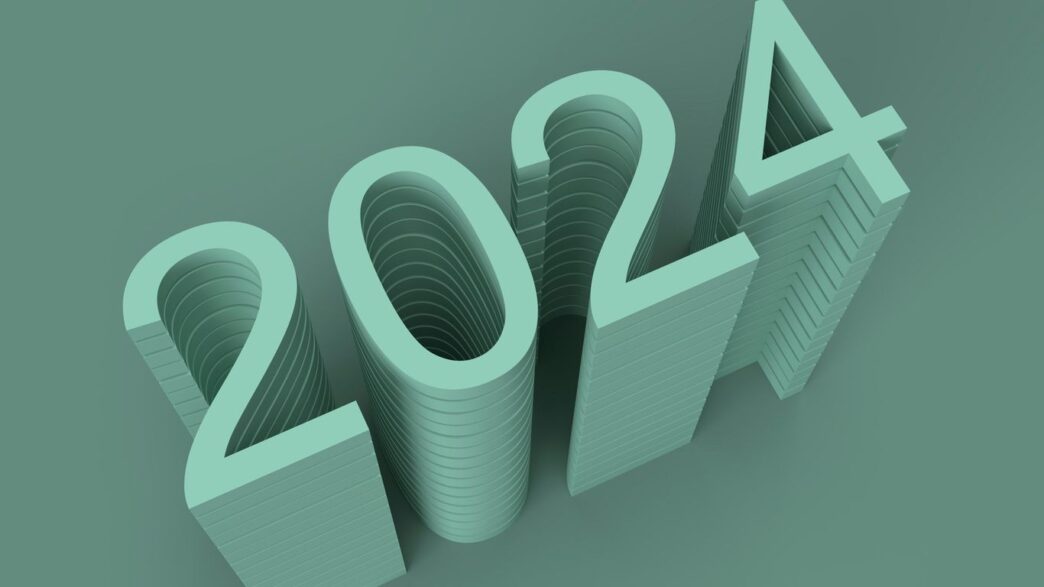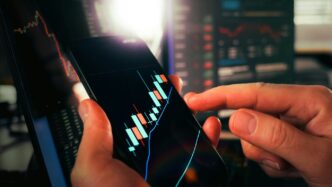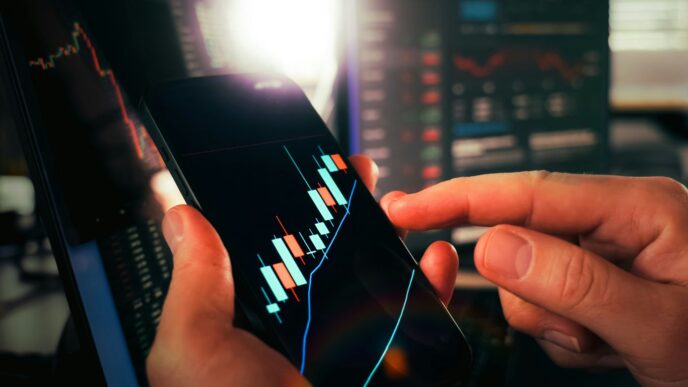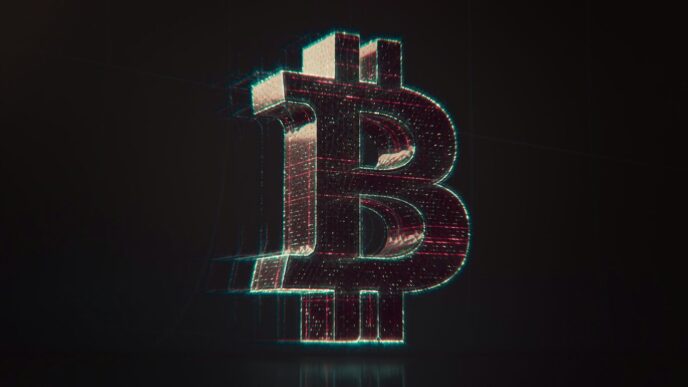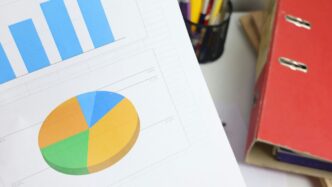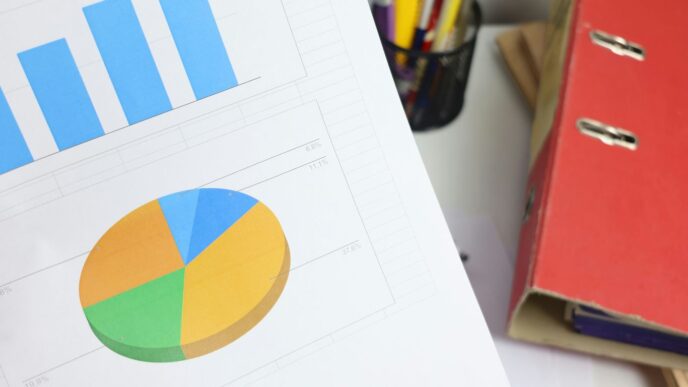Thinking about getting a loan for your business? The Small Business Administration (SBA) offers loans that can be a real help, and understanding how their interest rates work is key. We’re looking at the details for October 2025, so you know what to expect. It’s not as complicated as it might seem at first glance, and knowing the ins and outs can help you find the best deal for your company. Let’s break down what you need to know about SBA loan rates.
Key Takeaways
- SBA loan rates are influenced by a base rate, like the prime rate, plus a markup from the lender, but they can’t go above SBA-set maximums.
- The SBA 7(a) loan program has maximum fixed and variable rates that change based on the loan amount, with rates generally ranging from about 10.25% to 15.50%.
- SBA 504 loan rates are fixed and tied to U.S. Treasury yields, offering different rates for 10, 20, and 25-year terms, typically around 6.17% to 6.25%.
- Microloan rates are set by intermediary lenders and usually fall between 8.00% and 13.00%, depending on the lender’s costs and loan specifics.
- Your personal credit score, the loan size, how long you plan to repay the loan, and any collateral you can offer all play a role in the specific SBA loan rate you might get.
Understanding SBA Loan Rate Structures

When you’re looking into getting a loan for your business, understanding how the interest rates are put together is pretty important. It’s not just a random number; there’s a system behind it, and knowing that can help you figure out what to expect. The Small Business Administration (SBA) doesn’t actually lend you the money directly. Instead, they back a portion of the loan, which makes lenders more willing to lend to small businesses. This guarantee is a big deal, but it doesn’t mean the SBA sets the exact rate you’ll pay. That’s where things get a little more nuanced.
How SBA Loan Interest Rates Are Determined
So, how does a lender decide what interest rate to offer you? It’s a mix of what the SBA allows and what the lender thinks is fair based on your situation. The SBA sets maximum rates for its loan programs, but within those limits, lenders have some wiggle room. They look at a few things, like the current market conditions and your business’s financial health. The final rate you get is a combination of a base rate, a lender’s markup, and any specific program rules.
The Role of Base Rates and Lender Markups
Most SBA loan rates start with a base rate. The most common one is the Prime Rate, which is basically the interest rate that commercial banks charge their most creditworthy corporate customers. As of October 2025, the Prime Rate is sitting at 7.25%. Sometimes, the SBA might use an ‘optional peg rate’ too, which is adjusted quarterly based on market trends; it’s currently at 4.75%.
On top of that base rate, the lender adds their own markup. This is where they cover their costs and make a profit. The size of this markup can depend on several factors, including the type of SBA loan you’re applying for, how much you want to borrow, and the length of the loan term. It’s like adding a percentage on top of the starting price.
SBA Rate Caps Explained
To make sure things don’t get out of hand, the SBA puts a cap on how high the interest rates can go for certain loan programs, especially the popular 7(a) loans and microloans. These caps are set by the SBA and are based on the loan amount. For example, for loans of $250,000 or more, the maximum rate might be around 12.50% (this is the maximum allowed, not necessarily what you’ll be charged). It’s good to know these limits exist, as they provide a ceiling on what lenders can charge, offering some protection for borrowers. The SBA updates these caps periodically, so it’s worth checking the latest figures if you’re in the market for a loan.
Current SBA 7(a) Loan Rate Details
Alright, let’s talk about the nitty-gritty of SBA 7(a) loan rates as of October 2025. These are the most common loans the Small Business Administration backs, and understanding their rates is pretty important if you’re looking to finance your business.
The SBA sets maximum rates for both fixed and variable 7(a) loans, which means your lender can’t just charge whatever they want. They have to stay within these limits to keep the loans accessible. The exact rate you get will depend on a few things, like your credit score, the loan amount, and the lender’s own markup.
Maximum Fixed Rates for 7(a) Loans
For fixed-rate 7(a) loans, the SBA publishes maximum rates. These rates are generally higher than variable rates but offer the predictability of knowing exactly what your interest payment will be each month. Here’s a look at the maximums based on loan size:
| Loan Amount | Maximum Fixed Rate |
|---|---|
| $25,000 or less | 15.50% |
| $25,001 – $50,000 | 14.50% |
| $50,001 – $250,000 | 13.50% |
| Over $250,000 | 12.50% |
Keep in mind these are maximums, and your actual rate could be lower. The current prime rate, which influences these calculations, is 7.25% as of October 2025. You can find more details on the SBA’s FTA wiki.
Maximum Variable Rates for 7(a) Loans
Variable rates are tied to a base rate, usually the prime rate, plus a spread determined by the loan amount. This means your rate can fluctuate over time. Here are the maximum variable rates:
| Loan Amount | Maximum Variable Rate |
|---|---|
| $50,000 or less | Prime Rate + 6.5% |
| $50,001 – $250,000 | Prime Rate + 6.0% |
| $250,001 – $350,000 | Prime Rate + 4.5% |
| Over $350,000 | Prime Rate + 3.0% |
So, if the prime rate is 7.25%, a loan of $50,000 or less could have a maximum variable rate of 13.75% (7.25% + 6.5%). It’s a good idea to use a business loan calculator to see how these variable rates might affect your payments over time.
Factors Influencing 7(a) Loan Spreads
That
SBA 504 Loan Interest Rate Overview
When you’re looking at SBA 504 loans, the interest rates work a bit differently than other SBA programs. Instead of being tied to the prime rate, these rates are linked to the 10-year U.S. Treasury note. This means they tend to be pretty stable, which is great if you like predictability in your business finances. These loans are usually for big-ticket items like buying property, building new facilities, or getting some serious equipment. They’re offered through Certified Development Companies (CDCs), which are non-profits focused on helping local economies grow.
504 Loan Rates Tied to Treasury Yields
The interest rate on an SBA 504 loan is directly influenced by the yields on 10-year U.S. Treasury bonds. The SBA sets specific benchmarks above these Treasury rates, and these benchmarks can change quarterly. Because Treasury yields fluctuate, the actual rate you get will depend on when you lock it in. It’s a good idea to keep an eye on Treasury yields to get a sense of where rates might be heading.
Fixed Rate Structure for 504 Loans
One of the biggest draws of the 504 loan is its fixed interest rate. Once you secure the loan, that rate stays the same for the entire life of the loan, whether it’s 10, 20, or 25 years. This makes budgeting much easier because you know exactly what your principal and interest payments will be each month. No surprises here!
Comparing 10, 20, and 25-Year 504 Rates
SBA 504 loans come with a few term options, and each has its own rate. Generally, longer terms will have slightly higher interest rates compared to shorter terms, but they also mean lower monthly payments. Here’s a general idea of what you might see, though actual rates can vary:
- 10-Year Term: Typically has the lowest interest rate among the 504 options.
- 20-Year Term: The rate will be a bit higher than the 10-year term.
- 25-Year Term: Usually has the highest interest rate of the three, but offers the lowest monthly payment.
It’s important to remember that these rates are set by the CDC and are pegged to the 10-year Treasury note. The SBA doesn’t set a hard cap like they do for some other loan types, but rather a structure based on market performance.
SBA Microloan Interest Rate Considerations
Microloans from the SBA are a great option for newer businesses looking to cover startup costs or fund a bit of expansion. You can borrow up to $50,000, though most people end up taking out around $13,000. The longest you can take to pay it back is six years.
Microloan Rates Based on Lender Costs
Unlike some other SBA loans, microloan interest rates aren’t directly tied to Treasury yields or a fixed prime rate. Instead, they’re mostly based on what it costs the lender to get the money they’re lending out. Think of it as the lender’s own cost of funds. On top of that, they add a markup. For loans that are $10,000 or less, the markup is typically 8.5% over the lender’s cost. If your loan is bigger than $10,000, that markup usually drops a bit to 7.75% over their cost.
Typical Microloan Rate Ranges
So, what does this mean for your actual interest rate? Generally, you can expect SBA microloan rates to fall somewhere between 8% and 13%. This range can shift depending on the lender and current market conditions. It’s always a good idea to shop around and compare offers.
Impact of Loan Size on Microloan Rates
As we touched on, the size of your microloan can actually influence the rate. Smaller loans, those $10,000 and under, tend to have a slightly higher markup from the lender compared to larger microloans. This is because the administrative costs for the lender might be similar regardless of the loan amount, so they adjust the rate to make smaller loans worthwhile for them. While the difference might not be huge, it’s something to keep in mind when you’re comparing your options.
Factors Affecting Your Specific SBA Loan Rate
So, you’re looking into an SBA loan, and you’ve seen a bunch of numbers floating around. It’s not just one magic number for everyone, though. A few things really play a role in what rate you’ll actually end up paying. Think of it like shopping for a car – the sticker price is just a starting point, right? Your personal credit score is a big one. Lenders want to see that you’ve managed your money well in the past. A higher score generally means they see you as less of a risk, and that can translate into a better interest rate. It’s not the only thing, but it’s definitely up there.
Then there’s the loan itself. How much money are you asking for, and how long do you plan to take to pay it back? Generally, larger loans or longer repayment terms might come with slightly higher rates. It makes sense, I guess – the lender is waiting longer to get all their money back, and more money is involved. It’s a bit of a balancing act.
And don’t forget about collateral. If you’re putting up assets, like property or equipment, to back the loan, that can also influence the rate. It gives the lender more security.
Here’s a quick look at how these can stack up:
- Personal Credit Score: A score above 700 is often a good starting point for favorable rates.
- Loan Amount & Term: Shorter terms and smaller amounts might sometimes offer lower rates, but it depends on the specific loan program.
- Collateral: Offering strong collateral can sometimes lead to a more attractive rate.
It’s always a good idea to talk to a few different lenders and see what they offer based on your specific situation. You might be surprised at the differences. Remember, comparing offers is key to finding the best deal for your business. You can check out general business loan rates to see how SBA loans stack up against other options average interest rates for business loans.
The Influence of Personal Credit Score
Your credit score is probably one of the first things a lender looks at. It’s like your financial report card. If you’ve got a solid history of paying bills on time and managing debt responsibly, you’re in a much better position. Lenders see this as a sign that you’re likely to repay the loan as agreed. A score in the high 600s or 700s is usually what you’re aiming for to get the best rates. If your score is a bit lower, don’t despair – there might still be options, but the interest rate might be a little higher to account for the increased risk. It’s worth spending some time to improve your credit if you can before you apply.
How Loan Amount and Term Length Matter
Okay, so you need a loan. How much are you asking for, and how long do you want to take to pay it back? These two things can definitely affect your interest rate. For SBA loans, especially the 7(a) program, the amount you borrow can influence the lender’s markup over the base rate. For instance, loans over $350,000 might have a lower markup percentage compared to smaller loans. The term length is also a factor. Longer terms mean the lender is waiting longer for their money, which can sometimes mean a slightly higher rate. It’s not always a straight line, though; sometimes longer terms are needed for certain investments, and lenders factor that in. You’ll want to think about what repayment schedule works best for your business’s cash flow.
The Role of Collateral in Rate Negotiation
Collateral is basically an asset you pledge to the lender to secure the loan. If you can’t repay the loan, the lender can take possession of that asset. This reduces the lender’s risk. Because of this reduced risk, offering good collateral can sometimes help you negotiate a better interest rate. Think of it as a safety net for the lender. The type and value of the collateral matter. For example, real estate is often considered strong collateral. If you’re looking at a loan for equipment or property, those assets themselves can often serve as collateral. It’s another piece of the puzzle that lenders consider when deciding on the final rate.
Navigating SBA Loan Fees and Guarantees
Beyond the interest rate, there are a few other costs associated with SBA loans that you’ll want to be aware of. These include SBA guarantee fees and annual service fees. Think of these as part of what makes SBA loans a bit different from your typical bank loan.
Understanding SBA Guarantee Fees
The SBA guarantee fee is basically a one-time charge that helps cover the SBA’s costs if, for some reason, the borrower can’t repay the loan. The lender pays this fee to the SBA, but often, they’ll pass some or all of that cost on to you, the borrower. The amount of this fee depends on the loan amount and how long you plan to repay it.
For loans with terms of 12 months or less, the guarantee fee is usually pretty small. For example, if the loan is $1 million or less, there might be no fee at all. If it’s over $1 million, it’s typically 0.25% of the guaranteed part.
For loans with longer repayment periods (more than 12 months), the fees can be a bit higher. For loans up to $1 million, it might be 0% of the guaranteed portion. But for loans over $1 million, it gets a little more complex. It’s usually around 3.5% of the guaranteed portion up to $1 million, and then 3.75% on any amount over that. It’s important to check the specific rates for the fiscal year, as these can change.
Good news for some manufacturers: For fiscal year 2026, the SBA is waiving guarantee fees on certain loans for small manufacturers. This applies to 7(a) loans of $950,000 or less and 504 loans of any size. Definitely ask your lender if this applies to you.
Annual Service Fees for SBA Loans
These fees are a bit different. They’re paid to the lender to compensate them for making and managing the loan. For SBA 7(a) loans, the annual service fee structure for fiscal year 2025 (starting October 1, 2024) looks something like this:
- Loans of $500,000 or less: Typically 0% service fee.
- Loans from $500,001 to $1,000,000: Around 0.17% of the guaranteed portion of the outstanding loan balance.
- Loans from $1,000,001 to $5,000,000: Around 0.55% of the guaranteed portion of the outstanding loan balance.
It’s worth noting that lenders generally can’t pass these annual service fees directly onto the borrower. They’re part of the lender’s compensation.
How SBA Guarantees Impact Lender Risk
The SBA guarantee is a pretty big deal for lenders. It means the SBA agrees to cover a portion of the loan if the borrower defaults. This significantly reduces the risk for the lender, which is why they’re often more willing to offer loans with favorable terms compared to conventional business loans.
For most 7(a) loans, the SBA might guarantee up to 85% for smaller loans (under $150,000) and around 75% for larger ones. Some specific loan types, like Express loans, have a lower guarantee percentage (50%), while others, like Export Express loans, can have a high guarantee of up to 90%. This guarantee is what allows the SBA to encourage lenders to provide financing to small businesses that might not otherwise qualify.
Wrapping Up: What to Remember About SBA Loan Rates
So, we’ve gone over how SBA loan rates work, and what you can expect to see in October 2025. It’s not super complicated, but there are definitely a few things to keep in mind. Remember that the SBA sets the highest rate a lender can charge, but your actual rate will depend on the lender, the type of loan, and your business’s situation. Shopping around and having good credit can really help you get a better deal. Don’t forget to check out the different loan programs, like the 7(a) or 504, to see which one fits your business needs best. Getting the right loan at a good rate can make a big difference for your business, so take your time and do your homework.
Frequently Asked Questions
What determines the interest rate on an SBA loan?
The interest rate for an SBA loan isn’t set by a single number. It’s mostly based on a main rate, like the Prime Rate, which changes with the economy. Lenders then add a little extra percentage on top of that main rate. This extra bit, called a markup, can change depending on how much money you’re borrowing, what kind of SBA loan it is, and how long you plan to pay it back.
Are SBA loan rates fixed or variable?
SBA loans can come with either fixed or variable interest rates. Fixed rates stay the same for the entire life of the loan, so your payment amount won’t change. Variable rates can go up or down as the main interest rates in the economy change. Lenders decide which type they offer, and it can depend on the specific SBA loan program you choose.
What’s the difference between SBA 7(a) and 504 loan rates?
SBA 7(a) loans are more flexible and can be used for many things, like everyday business costs. Their rates can be fixed or variable and are generally higher, often ranging from about 3% to 8% above the main rate. SBA 504 loans are usually for big purchases like buildings or equipment, and they have fixed rates tied to U.S. Treasury yields, which tend to be lower.
Can my credit score affect my SBA loan interest rate?
Yes, your credit score plays a big role! If you have a good credit score, lenders see you as less risky. This means you’re more likely to get approved for an SBA loan and could qualify for a lower interest rate. A lower credit score might mean a higher rate or even make it harder to get approved.
What are SBA loan guarantee fees and annual service fees?
The SBA doesn’t charge you directly for guaranteeing the loan, but the lender might charge fees. Guarantee fees help the SBA cover their costs if the borrower can’t repay the loan. Annual service fees are paid by the lender to the SBA for their part in the loan. Lenders usually can’t pass these annual service fees directly onto you.
How can I get the best possible SBA loan interest rate?
To get the best rate, try shopping around and comparing offers from different lenders. Making sure your personal credit score is in good shape is also super important. Sometimes, choosing a shorter repayment period can lower your rate, and offering collateral, like property or equipment, can make you seem less risky to the lender, potentially leading to a better rate.

